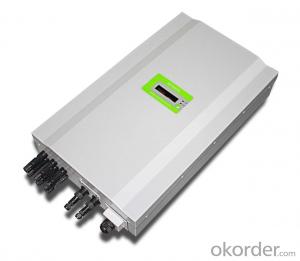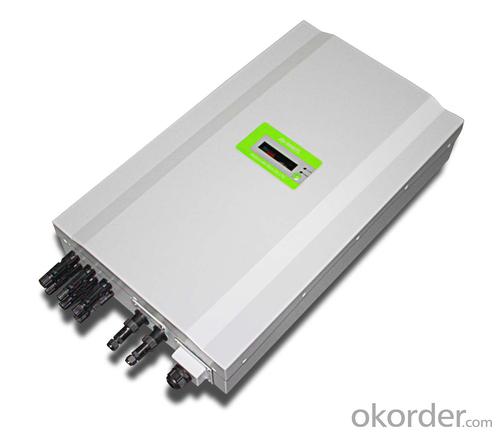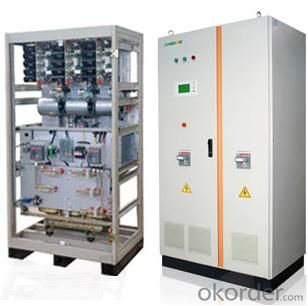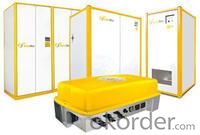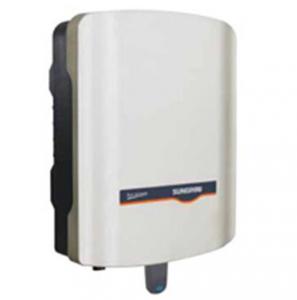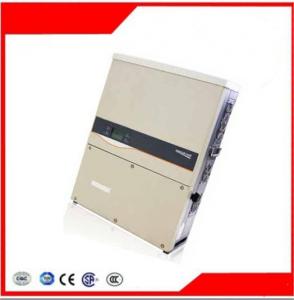LG Solar Inverter NB5KE Grid Connected Inverter Model
- Loading Port:
- China main port
- Payment Terms:
- TT OR LC
- Min Order Qty:
- 3000 watt
- Supply Capability:
- 123900 watt/month
OKorder Service Pledge
OKorder Financial Service
You Might Also Like
NB5kE Scope of Application
NB5kE inverter is suitable for small BAPV grid connected photovoltaic power generation system. Its protection degree is IP65 and can be installed indoor or outdoor to operate in harsh environment conditions.
NB5kE Product Features
Powerful real-time detection and perfect protection.
Double MPPT tracking and >99.5% efficiency.
Active and passive anti-island function.
Designed with no isolation transformer to get higher conversion
NB5kE Efficiency:
Built-in DC switch designed in input side.
Wide MPPT voltage range.
Bilingual language LCD and multi-country safety requirements for option.
Wall fixed installation.
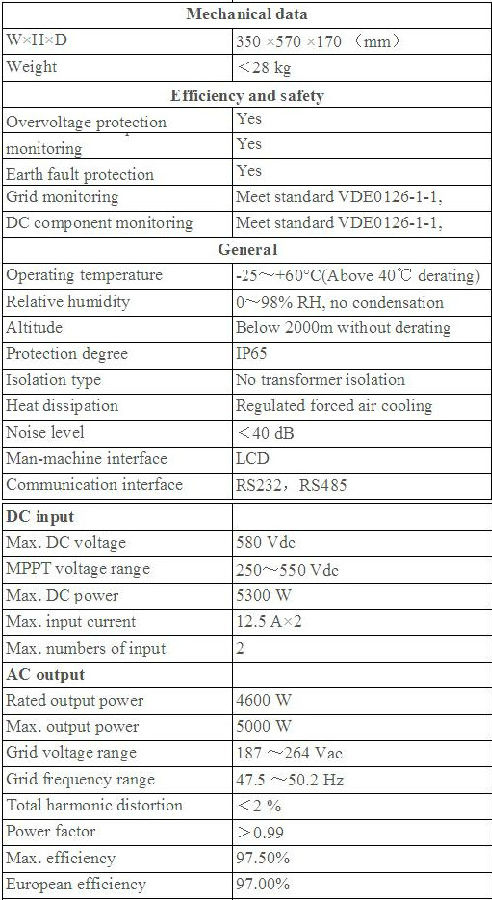
- Q: Can a solar inverter be used with solar-powered air conditioning systems?
- Yes, a solar inverter can be used with solar-powered air conditioning systems. The solar inverter is responsible for converting the direct current (DC) generated by the solar panels into alternating current (AC) that can be used to power various electrical appliances, including air conditioning units. By connecting the solar inverter to the solar panels and the air conditioning system, the generated solar energy can be efficiently utilized to power the AC system.
- Q: PV grid-connected inverter can directly load it?
- Converter is the AC voltage of the grid into a stable 12V DC output, and the inverter is the AC output of the 12V DC voltage into high-frequency high-voltage alternating current; two parts are also used with more pulse width
- Q: How does a solar inverter protect against overvoltage and overcurrent?
- A solar inverter protects against overvoltage by continuously monitoring the voltage levels of the solar panels and adjusting the conversion process to ensure that the output voltage remains within a safe range. In case of overvoltage, the inverter automatically reduces the power output or shuts down to prevent damage to the system. Similarly, the inverter safeguards against overcurrent by constantly monitoring the current flowing through the system. If the current exceeds the safe limits, the inverter utilizes protective measures such as reducing the power output, regulating the current, or triggering a shutdown to prevent any potential damage to the solar panels or connected devices.
- Q: Photovoltaic grid-connected inverter problem
- But Baidu Encyclopedia clearly pointed out: the zero line is the secondary side of the transformer leads the neutral point of the line, and the phase line constitutes a circuit for power supply equipment.
- Q: Can a solar inverter be used in a mobile or portable solar system?
- Yes, a solar inverter can be used in a mobile or portable solar system. In fact, it is a crucial component that converts the direct current (DC) generated by the solar panels into alternating current (AC) that can be used to power various devices and appliances. Portable solar systems often include a built-in inverter, allowing them to provide convenient and clean energy on the go.
- Q: Can a solar inverter be used in systems with different module strings?
- Yes, a solar inverter can be used in systems with different module strings. Solar inverters are designed to be compatible with a wide range of module string configurations, allowing for flexibility in system design and installation. The inverter's maximum input voltage and power ratings should be considered to ensure compatibility with the different module strings, but as long as these specifications are within the inverter's limits, it can effectively convert the DC power generated by the module strings into AC power for use in the system.
- Q: How does a hybrid solar inverter work?
- A hybrid solar inverter works by converting the direct current (DC) power generated by solar panels into alternating current (AC) power that can be used to power household appliances or be fed back into the grid. It also has the capability to store excess energy in batteries for later use during periods of low solar generation or power outages. This allows for efficient utilization of solar energy and provides backup power when needed.
- Q: Can a solar inverter be used in areas with high seismic activity?
- Yes, a solar inverter can be used in areas with high seismic activity. However, it is important to ensure that the solar inverter is designed to withstand and operate safely under such conditions. Solar inverters are typically built with robust and durable materials to be able to withstand various environmental factors, including seismic activity. They are often tested and certified to meet specific standards for seismic resistance. When installing a solar inverter in an area with high seismic activity, it is crucial to follow the manufacturer's guidelines and recommendations. This may involve using additional measures such as reinforced mounting structures, flexible connections, and proper grounding techniques to enhance the stability and resilience of the inverter system. Moreover, regular maintenance and inspections should be conducted to ensure that the solar inverter remains in good working condition even after seismic events. This includes checking for any signs of damage, loose connections, or other potential issues that may have been caused by seismic activity. By taking appropriate precautions and using seismic-resistant solar inverters, it is possible to safely and effectively harness solar energy even in areas prone to seismic activity.
- Q: How do you calculate the maximum power point tracking range for a solar inverter?
- To calculate the maximum power point tracking (MPPT) range for a solar inverter, you need to consider various factors such as the solar panel's voltage and current characteristics, temperature, and the inverter's efficiency. Using the voltage-current (V-I) curve of the solar panel, the MPPT range can be determined by finding the point where the power output is maximized. This is typically done using algorithms within the solar inverter to continuously adjust the operating point to track the maximum power available from the solar panel.
- Q: How does a solar inverter handle voltage stability in the grid?
- A solar inverter handles voltage stability in the grid by continuously monitoring the voltage levels and adjusting its output accordingly. It maintains a stable voltage by regulating the power output from the solar panels and injecting or absorbing reactive power as needed. This helps to stabilize the grid voltage and prevent fluctuations that can disrupt the operation of electrical devices and appliances connected to the grid.
Send your message to us
LG Solar Inverter NB5KE Grid Connected Inverter Model
- Loading Port:
- China main port
- Payment Terms:
- TT OR LC
- Min Order Qty:
- 3000 watt
- Supply Capability:
- 123900 watt/month
OKorder Service Pledge
OKorder Financial Service
Similar products
Hot products
Hot Searches
Related keywords
